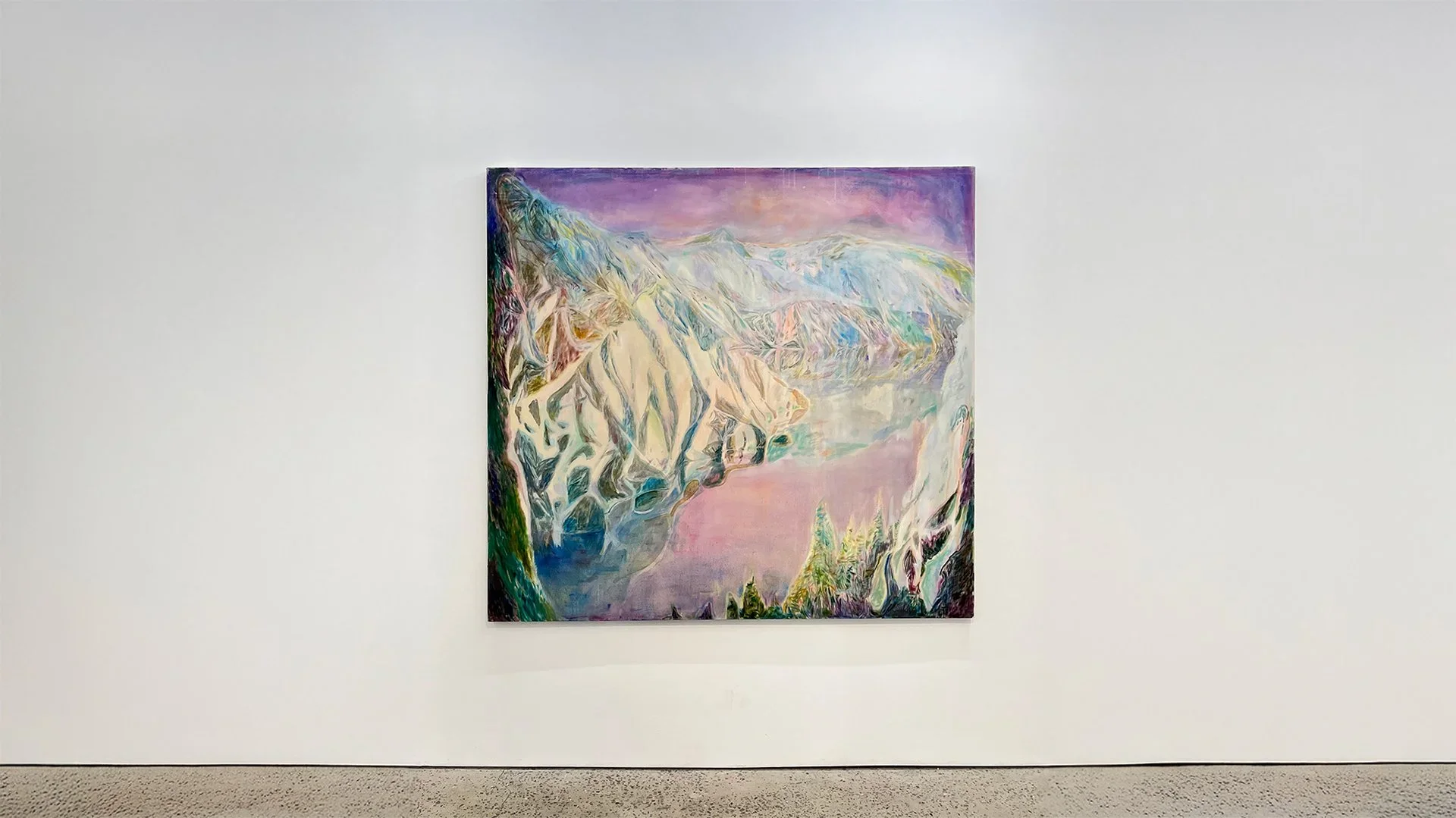Cosmologies of Crater Lake
Colin Brant Phantom Ship Winter, 2025, Oil on canvas, 65 x 70 inches Europa NYC
Crater Lake, with its perfectly circular basin and island at its center, feels less like a landform than a sacred metaphor etched into the earth by myth itself. Formed nearly 8,000 years ago by the collapse of Mount Mazama in a cataclysmic eruption, it is not solely a crater, it is a cosmic retort, a geological alembic in which deep earthly elements are refined and reborn. Here, geology, myth, and alchemy converge in a landscape of transformation.
Renowned for its clarity and symmetry, at 1,943 feet, it is the deepest lake in the United States. Two features rise from its surface, Wizard Island, a volcanic cinder cone and Phantom Ship, a jagged andesite rock formation dating back approximately 400,000 years, resembling a ghostly vessel. Both are remnants of the lake’s violent birth and steeped in lore. Especially evocative in misty conditions, Phantom Ship appears and vanishes in changing light. Wizard Island is said to be protected by a spirit, echoing the beliefs of the Klamath people, for whom the lake is sacred.
The Klamath name for the lake is Giiwas, meaning “most sacred.” According to their myth, the lake was formed after an explosive battle between Llao, a malevolent underworld spirit, and Skell, a benevolent sky god. As the mountain collapsed, this mythic conflict imprinted itself onto the land, creating a place of immense power and spiritual danger. Believed as a place of testing, shamanic vision quests were sometimes undertaken nearby, but the lake itself was often avoided. Its depth and stillness marked it as a veil between worlds.
A peculiar inhabitant of the lake is “Old Man,” a 30-foot hemlock log that has floated upright for centuries. According to legend, he controls the weather. In August 1988, scientists tethered him to the shore during research, only for a sudden snowstorm to descend. Upon release, the weather cleared.
In The Forge and the Crucible, Mircea Eliade writes that early metalwork was sacred, not just technical. To mine was to descend into the chthonic temple, a womb-like realm of transformation. Metals were alive; they ripened in the dark. Miners, blacksmiths, and alchemists were initiates in rituals of cosmic metamorphosis. Their forges were spiritual laboratories where matter and spirit converged. In this light, Crater Lake becomes Earth’s own alembic, a vessel of natural alchemy.
The lake’s roundness evokes the alchemical mandala, a symbol of wholeness and transmutation. Just as the alembic distills the volatile from the base, the crater holds both the memory of destruction and the possibility of transformation. Within it, Wizard Island rises like the cap of the alembic, a remnant volcanic cone, but also a symbol of the ascending spirit. In alchemical diagrams, the alembic often features a lower chamber, the source of heat, a round belly where transformation occurs and a neck or spire that channels the refined essence upward. Phantom Ship, sitting precisely within this sacred geometry, becomes an axis mundi of sublimation, the visible tip of the alchemist’s tool that connects the infernal with the celestial. The erect Old Man, like a temperamental tempestarii, transmutes into a living barometer. The power of this geography extends beyond metaphor. It is enacted, embodied, and believed.
Craters and mountains, depression and elevation, are twin gestures of transformation. The Klamath myth affirms this chymical wedding through destruction and renewal, and descent and ascent. Crater Lake is more than a natural wonder. It is a sacred crucible, a place where the spiritual and geological meet, and where those who approach its depths are invited to enter the ancient cycle of dissolution and rebirth, a matrix that shapes both the natural world and inner life.
Text by Wells Chandler
Exhibition essay for Colin Brant’s Phantom Ship at Europa, New York, NY, June 12- July 13, 2025
